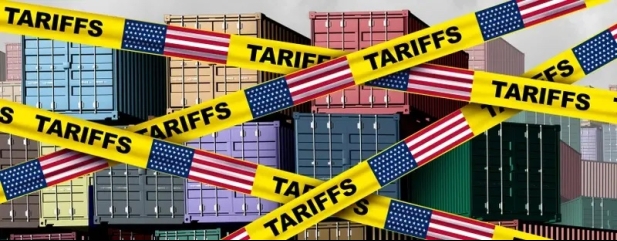Archived article
Please note that tax, investment, pension and ISA rules can change and the information and any views contained in this article may now be inaccurate.
Markets brought back from the brink after planned tariffs put on hold

In a fitting irony for our high-tech 21st century world, it was an old-fashioned technology which brought markets back from the brink on 3 February after Donald Trump’s telephone conversations with the presidents of Mexico and Canada resulted in planned 25% tariffs being delayed by a month.
Mexico agreed to station 10,000 members of its National Guard on the border and Canada deployed Canadian forces to its border and appointed a ‘Fentanyl tsar’.
Stock markets recovered from deep losses and the US dollar gave back gains, while gold slipped back after registering a new high of $2,832 per troy ounce.
There was, however, no reprieve for China which means 10% tariffs apply from 4 February. China has responded by slapping 15% tariffs on US coal and natural gas as well as 10% tariffs on crude oil and farm equipment.
It has also announced some export controls on key metals and opened an anti-monopoly investigation into Alphabet (GOOG:NASDAQ) owned Google.
The chaotic market action did at least provide investors a sneak-peek of what could be in store should tariffs become a reality for Canadian and Mexican goods imported into the US.
Two of the biggest impacts are expected to be seen in the autos and drinks sectors which represent a large proportion of US consumption. Europe’s biggest car company VW exported over half a million cars to the US from Mexico in 2024 according to Mexico’s statistics agency.
The European auto index dropped around 3.5% at its worst point on Monday with the two biggest manufacturers, Volkswagen (VOW:ETR) and Stellantis (STLAM:BIT) seeing the brunt of the selling, dropping as much as 7%.
Analysts at investment bank Stifel estimate around €8 billion of VW’s revenues are impacted by tariffs which could wipe out 12% of operating profit. The corresponding estimates for the Fiat, Chrysler and Peugeot owned Stellantis group are $16 billion and 40%, respectively.
US car makers were also caught up in the selling with Ford (F:NYSE) and General Motors (GM:NYSE) falling up to 5%, on worries that tariffs could add thousands of dollars to the price of new cars.
The drinks sector is also exposed to tariffs given that a combined 80% of beer is imported into the US from Canada and Mexico.
Looking at the broader equity market, chief US equity strategist David Costin at Goldman Sachs estimates that, if sustained, every five-percentage point increase in US tariffs would reduce S&P 500 earnings per share by 2% to 3%, everything else being equal.
Important information:
These articles are provided by Shares magazine which is published by AJ Bell Media, a part of AJ Bell. Shares is not written by AJ Bell.
Shares is provided for your general information and use and is not a personal recommendation to invest. It is not intended to be relied upon by you in making or not making any investment decisions. The investments referred to in these articles will not be suitable for all investors. If in doubt please seek appropriate independent financial advice.
Investors acting on the information in these articles do so at their own risk and AJ Bell Media and its staff do not accept liability for losses suffered by investors as a result of their investment decisions.
Issue contents
Editor's View
Feature
Great Ideas
Investment Trusts
News
- US companies on course for highest quarterly earnings growth since 2021
- The factors driving Imperial Brands to 52-week highs
- Barclays set to deliver strong annual profit growth after doubling share price
- Mitchells & Butlers shares knocked by £100 million ‘cost headwinds’
- A return to growth in international markets in focus at McDonald's
- Markets brought back from the brink after planned tariffs put on hold
- Saba rebuffed as retail shareholders turn out for trust votes
 magazine
magazine








